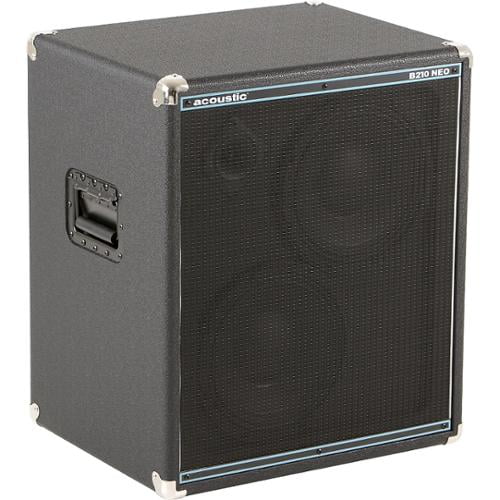
Don’t ask me why the 146 is included in the 150 Series!ġ971-’76 Model 134 Guitar Amp (combo, 125 watts RMS, 2 ch, hi/lo inputs, bright sw, vol/treb/bs, rev, trem, 4×10″ open back, wheels, cover). Availability dates are from another source and should be taken with a large grain of salt, since I can’t confirm their accuracy.

Here are the amps listed in the early ’73 and ’74 catalogs. Control panels would either be aluminum or more likely black, usually with the logo and model number in a strip running along the bottom of the panel. Some Acoustics also featured graphic equalizers.Įarly Acoustic amps featured charcoal grey tolex on the cabinets with black grilles usually surrounded by white piping. Some Acoustic amps also had a booster output, allowing you to power slave amplifiers after the power output circuit. These also featured channel switching so you could have two different tonal settings.
BACINI ACOUSTICA SPEAKER MANUAL SERIES
Acoustic’s 450 and 470 Series amps had symmetrical distortion circuits that eliminated hum and non-harmonic content, and both had a switch allowing you to play either lead or bass guitar through them. Remember, tremolo is variation in volume, vibrato is variation in pitch frequency (guitars have vibratos, not tremolos). 130 and 150 Series amps featured something called “interlocking protection circuits” that let you daisy chain the channels with a guitar cable to get an overdrive effect at moderate volume levels.Īcoustic also touted its tremolo circuit as being the only “true” one available, with a potential for 90 percent volume cut.

Other technical features included dual sensitivity inputs for each channel, the left being more sensitive (e.g., for the lead guitar), the right slightly less (e.g., for the rhythm guitar or for very high-output pickups). We might as well document the amps therein, since you’re going to find them and few are out there talking about these solidstate babies while the tube-hegemony reigns.Īmong the innovations Acoustic claimed for itself was first use of front-loaded speakers and snap-off grills, making speaker changing easier. I’m not really an amp guy, but I have two early Acoustic catalogs, from early ’73 and ’74.


 0 kommentar(er)
0 kommentar(er)
